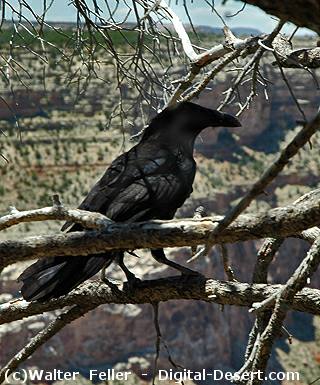Desert Omnivores
Omnivores are animals which consume both other animals and plants as part of their typical diet. The coyote and raven are two well known examples of successful desert omnivores. This includes small animals which are somewhat insectivorous, such as certain mice and rats. The white-tailed antelope squirrel is omnivorous, eating both seeds and insects.
List of Omnivores
This adaptation allows them to thrive in the harsh conditions of the desert, where food can be scarce and seasonal. Here are some of the omnivores you might find in the Mojave Desert:Coyotes (Canis latrans): Coyotes are highly adaptable and can change their diet based on what's available. They eat fruits, vegetables, and small animals.
Ravens (Corvus corax): Ravens are extremely intelligent birds that eat almost anything they can find, including insects, small animals, carrion, and plant material.
Black Bears (Ursus americanus): Though not commonly associated with desert environments, black bears can be found in the higher, forested regions of the Mojave Desert. They have a varied diet that includes fruits, nuts, and small mammals.
Kit Foxes (Vulpes macrotis): While primarily carnivorous, kit foxes have been known to consume a variety of plant matter, making them opportunistic omnivores.
Desert Tortoises (Gopherus agassizii): Primarily herbivorous, desert tortoises have been observed eating small insects and carrion, especially during times of drought.
Ground Squirrels: Many species of ground squirrels inhabit the Mojave Desert, and they are known to eat a mix of seeds, nuts, fruits, insects, and occasionally small animals.
Skunks: Skunks in the Mojave are omnivores that feed on insects, small mammals, carrion, fruits, and plants.
These animals have adapted to the Mojave Desert's extreme conditions by developing diverse diets that allow them to take advantage of whatever food sources are available. This omnivorous behavior is crucial for their survival in an ecosystem where resources can be unpredictable and scarce.
OpenAI. (2024). ChatGPT (4) [Large language model]. https://chat.openai.com

Raven, the successful omnivore of the skies
|
Wildlife Watching * Successful wildlife viewing requires a few simple tricks. Click here to find out what they are. |
|
The Desert Food Chain * Everything has its niche. Who eats what, and what eats who in the desert? Click here to find out what more. |
